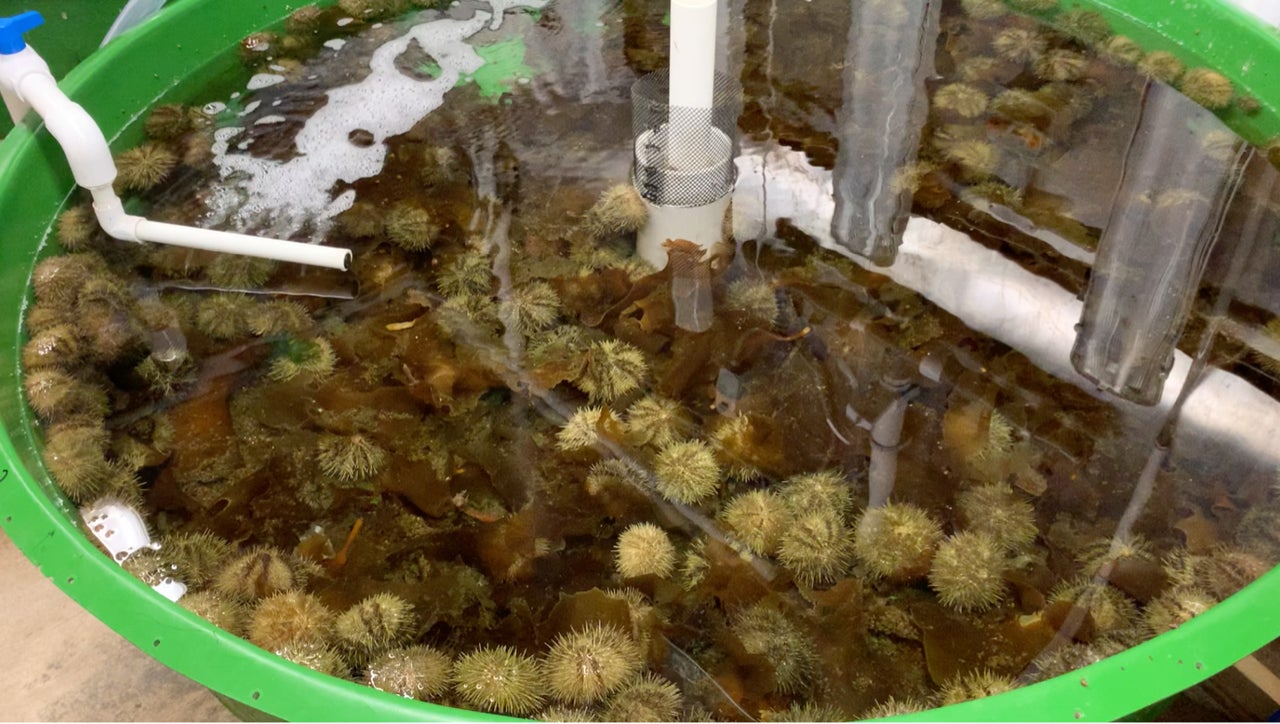KINGSTON, R.I. – January 25, 2021 — A team of researchers, aquaculture production specialists and educators, led by a University of Rhode Island scientist, has been awarded a grant from the U.S. Department of Agriculture’s Northeast Regional Aquaculture Center to improve hatchery production of the green sea urchin and engage prospective urchin farmers on growout possibilities in the Gulf of Maine and coastal northern New England.
The $100,000 project is led by Coleen Suckling, URI assistant professor of sustainable aquaculture, with collaborators Steve Eddy and Luz Kogson of the University of Maine, Larry Harris of the University of New Hampshire, and Dana Morse of Maine Sea Grant and the University of Maine Cooperative Extension.
According to Suckling, the green sea urchin is the target of a lucrative fishery in Maine, but one experiencing low harvest levels in recent years due to a combination of overharvesting and shifts in habitat. Efforts to produce urchins through aquaculture have not proven profitable or effective in augmenting wild populations.
There is a strong international demand for sea urchins, mostly driven by the Asian market, yet this demand is poorly met by North American suppliers, largely due to declining natural stocks and increased stock regulation,” said Suckling. “There is, therefore, substantial potential for aquaculture growth of urchins, and interest to grow sea urchins in New England is expanding, which our new project will help support by providing seed stock and technical advice at no cost.”
Recent advances in technology, techniques and feeds at urchin farms around the world will enable Suckling and staff at the University of Maine’s Center for Cooperative Aquaculture Research to study how to adapt these advances to local hatchery and nursery culture.
“Hatcheries across the world show that it’s possible to reliably grow hundreds of thousands of sea urchin seed in a predictable and cost-effective fashion,” Eddy said.
“The challenge lies in optimizing the hatchery methods, which are specific to the species, the location and the seawater conditions available to each hatchery,” Suckling added.
The research team will also engage regulatory agencies and prospective urchin producers in the Northeast to communicate developments in the availability of urchin seed stock and understand the interests and needs for producers and regulators. In addition, growth trials at Maine aquaculture sites will be conducted to track growth and survival, assess different feeds, and understand husbandry considerations.
“We are especially excited that the project enables us to offer sea urchin seed stock at no cost to new growers,” Suckling said.
“We already have several growers we are working with, and we’re looking to sign up more. We believe sea urchins are a natural fit with kelp aquaculture and oyster farms,” said Eddy.
Green sea urchins are found in the cool waters of Maine and south to Massachusetts, though there have been reports of them in the waters around Block Island, Rhode Island, as well. Suckling is investigating reports from scuba divers of green sea urchins elsewhere in the coastal waters of Rhode Island, but green sea urchins are not currently considered a native species in the state. If she can confirm these sightings, Suckling said that the potential for aquaculture production of green sea urchins in Rhode Island should be explored.
Aquaculturists interested in learning more should contact Suckling at coleensuckling@uri.edu or Luz Kogson at luz.kogson@maine.edu to receive project updates and be added to the list of those seeking urchin seed. Suckling is especially interested in hearing from anyone who has seen green sea urchins – rather than the native purple urchins – in Rhode Island waters and can provide photographs or site details.

